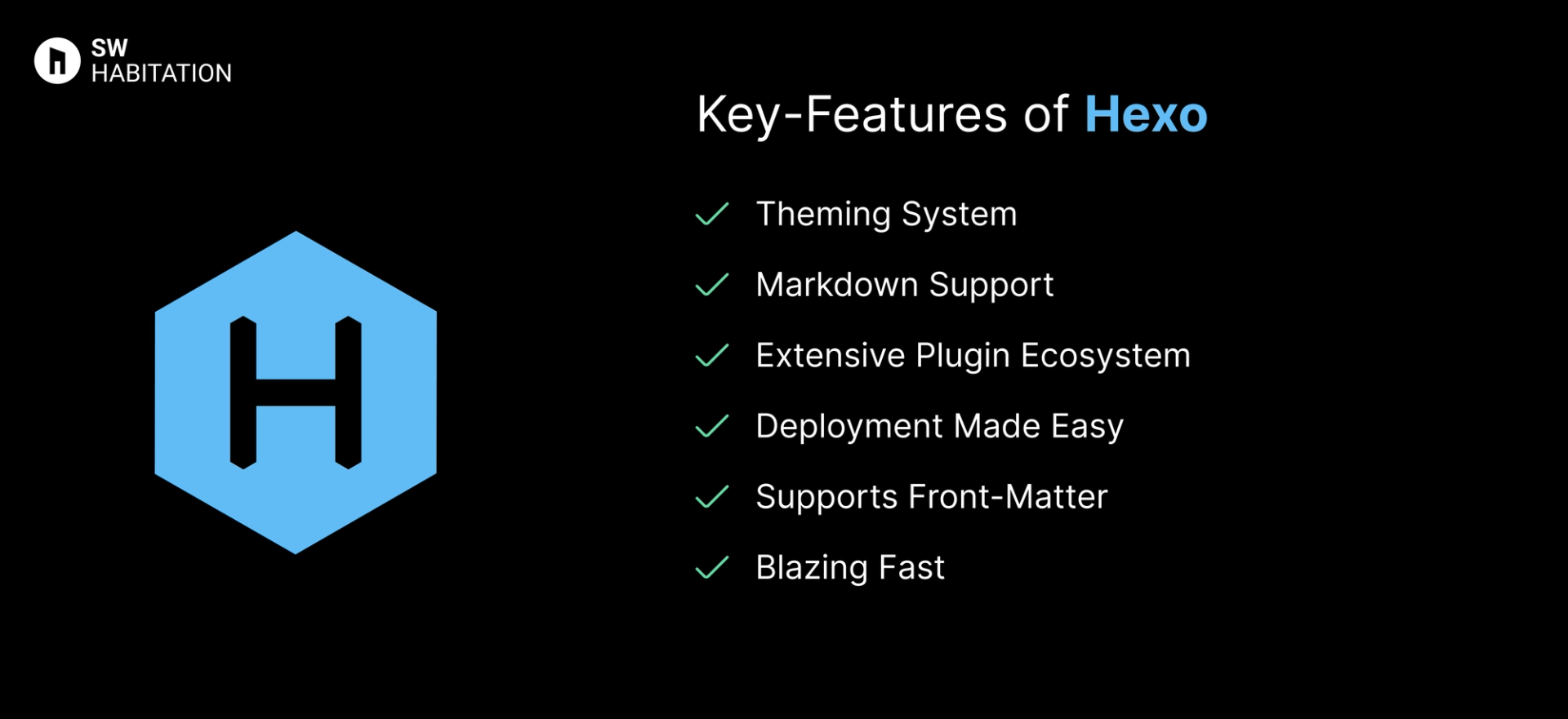Gatsby vs. Hexo

Gatsby

Hexo
Have you ever been to a website that loads super fast? Chances are it uses an SSG (Static Site Generator). It’s a tool that builds your site ahead of time, so when someone visits, they get the page instantly. No waiting around for things to load it’s just there.
What is Gatsby?
Gatsby is a React-based static site generator that combines the best of modern web development just like GraphQL, fast performance, and a rich plugin ecosystem to help you build static websites that feel dynamic.
It pulls in data from almost any source (APIs, CMSs, Markdown files) and serves it as blazing-fast static pages.
Key Features of Gatsby


- Optimized Performance: Automatically optimizes images and code splitting.
- Rich Plugin Ecosystem: Extend functionality effortlessly with plugins.
- SEO-Friendly: Pre-renders pages for great search engine optimization.
- PWA Support: Turn your site into a Progressive Web App with ease.
- GraphQL Data Layer: Fetch data from multiple sources seamlessly.
- Hot Reloading: Instant feedback during development.
- React-Powered: Leverages React for building UI components.
Advantages of Gatsby
- Great for Complex Sites: Handles large datasets and complex content structures well.
- Thriving Ecosystem: Tons of plugins and themes to speed up development.
- Data Agnostic: Pull data from anywhere — headless CMSs, APIs, or Markdown.
- Fast Performance: Optimizes everything out of the box.
- React Integration: Perfect if you’re already familiar with React.
Disadvantages of Gatsby
- Overkill for Simple Sites: Might be too much if all you need is a basic static site.
- Build Times: Can get slow with very large datasets.
- Learning Curve: Requires knowledge of React and GraphQL.
What is Hexo?
Hexo is a Node.js powered static site generator that transforms Markdown files into static HTML pages. It’s particularly popular among bloggers and developers who love the simplicity of Markdown but also want a bit more control over the final website output as well.
Key Features of Hexo


- Theming System: Supports customizable themes for a personalized look.
- Markdown Support: Write your content in Markdown and let Hexo handle the rest.
- Extensive Plugin Ecosystem: Offers a range of plugins for SEO, analytics, and more.
- Deployment Made Easy: One-command deployment to platforms like GitHub Pages or Vercel.
- Supports Front-Matter: Add metadata like titles, tags, and categories to each post.
- Blazing Fast: Generates static files in seconds, even for large websites.
Advantages of Hexo
- Huge Plugin Library: Extend functionality effortlessly.
- Perfect for Blogs: Tailored to bloggers who want to focus on content.
- Minimal Setup: Simple installation and configuration.
- Speed: Lightning-fast build times.
- Markdown Focused: Keeps writing pure and distraction-free.
Disadvantages of Hexo
- Less Modern Than Some Alternatives: Lacks the modern features of frameworks like Next.js or Gatsby.
- Limited Dynamic Content: Not ideal for highly interactive sites.
- Node.js Required: Needs Node.js installed.
Comparison Between Gatsby vs Hexo
Use Cases of Gatsby
- Large Data-Driven Sites: Great at handling large datasets from APIs or CMSs.
- SEO-Optimized Sites: Pre-renders pages for better SEO performance.
- E-Commerce: Integrates seamlessly with Shopify, Stripe, and other tools.
- Progressive Web Apps (PWAs): Built-in support for PWAs.
- Content-Driven Sites: Blogs, portfolios, documentation sites.
Use Cases of Hexo
- Fast Deployments: Get your site online with a single command.
- Technical Documentation: Write clean, organized docs quickly.
- Blogging: Built with bloggers in mind, especially those who love Markdown.
- Developer Portfolios: Show off projects with minimal effort.
Conclusion
Static Site Generators are a big game changer if you’re looking to build a website that’s fast, secure, and easy to maintain. Whether you’re launching a personal blog, portfolio, or a business website, they give you the freedom to focus on what really matters, your content and your users without all the extra complexity.
The best part? You’re not locked into one way of doing things. You can choose the tools and tech you’re most comfortable with, and scale things up as your site grows. From lightning-fast load times to better SEO and easy hosting, SSGs make the whole process smoother.
At the end of the day, it comes down to what fits your workflow and goals best. Pick the one that feels right to your requirements, and you’ll be well on your way to creating a beautiful, high-performing website that you’re proud of 🙌
Frequently asked questions
Is Gatsby SEO-friendly?
Yes, Gatsby provides out-of-the-box features like optimized images, clean URLs, and fast load times—all essential for SEO performance.
Is Gatsby hard to set up?
Not at all, Gatsby has nice documentation and many starter templates, making it easy to get started, even if you’re new to React.
Can I use GraphQL with Gatsby?
Yes, Gatsby has a built-in GraphQL layer, allowing you to query and manage your content and data in a flexible way.
Does Gatsby use React?
Yes, Gatsby is built on React, with the added benefit of GraphQL to pull in data from various sources CMSs, APIs, files, etc.
What’s Hexo good for?
Hexo is good for building fast blogs and simple static websites that need to be quickly set up and easily managed.
Is Hexo easy to set up?
Yup, Hexo has a straightforward setup process and is easy to get running with minimal configuration.
Does Hexo use Markdown?
Yup, Hexo uses Markdown files to create content, so it's developer-friendly and easy for content creators to manage.
Does Hexo support plugins?
Yup, Hexo has lots of plugins available to extend its functionality, whether it’s for SEO, performance, or content management.
